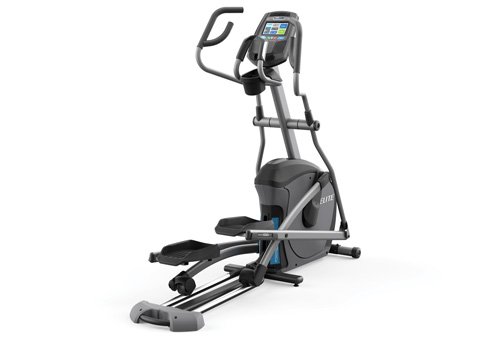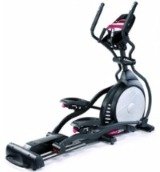What are the Muscles Used on an Elliptical Machine?
When working out, the muscles used on an elliptical machine are generally the same ones used in running, walking, and climbing stairs. Yet there are some key advantages to the elliptical trainer, as well as some interesting differences.
Because your feet never leave the pedals, your joints in your knees, ankles, and hips do not experience the type of jarring impact that running creates when you land with the full weight of your body on the forward foot.
Not only does the elliptical substantially lessen that type of shock that can travel up the body, a machine with features such as an adjustable incline, variable resistance and stride length, and moving workout arms, allows for a greater number of muscles to be used in a workout.
Primary Muscles Used: The Legs
The two major muscles groups involved in elliptical exercise are the quadriceps on the front of the thigh, and the hamstrings at the back of the upper leg. The quads help to lift your legs while the hamstrings help to return it to the start position.
It was shown in studies that the elliptical works the quads and hamstrings more than the treadmill and the exercise bike.
As you raise the incline on the elliptical, the muscles in your buttocks, called the gluterals or glutes, as well as the hip flexor muscles, work hard as you lift the thigh forward in the swing phase of the stride.
Lastly, the soleus and gastrocnemius muscles in the calves provide the push-off momentum of a stride and help to flex the ankle and foot in the proper position.
Secondary Muscles in the Abs and Back
Your back muscles and abdominal muscles, which are the core muscle group, are important for all walking-type exercise as well. They provide the framework for keeping the body upright, balanced, and stable while you stride on an elliptical.
The oblique muscles, located on either side of your abdomen, also help with flexion and rotation, especially when you use moving handlebars. While you may not perceive that you are even using these muscle groups, you actually do since the flexors and extensors in the back, abs, and glutes are constantly working to abduct the hip (move the thigh away from the body) and control the arc of the lower spine.
The Upper Body Workout Handles
More muscles are used on an elliptical machine if you have a trainer with upper body workout arms. Some cheaper trainers have arms that swing with no resistance, meaning that you only use them to balance yourself, and there is very little workout for your arms.
Better ellipticals have handlebars that offer real resistance to give the arms, shoulder, and chest a workout, plus increase your heart rate ( the heart – another muscle used!) and make your breath harder for a better calorie burn.
Benefits of Elliptical Exercise
As you can see, the muscles used on the elliptical machine are not just the legs, hips, and buttocks, but the back and abs, and with some conscious effort, the arms and shoulders too.
To build aerobic endurance as well as burn calories, plan to do your elliptical workout at least three times a week for 20 to 40 minutes. Ideally, you should add some form of resistance training to your exercise program to strengthen the upper and lower body.
UPDATE: Spring Elliptical Sales are going strong!
SEE THE BEST CURRENT DEALS HERE

Best By Price Range
Under $500
$500 - $1000
$1000 - $2000
$2000 - $3000
$3000 - $4000+
Elliptical Buying Guide

8 Features to Compare
Brake Systems
Stride Length
Front vs. Rear Drive
Warranties
Consumer Reviews

Here is your chance to rant or rave about the elliptical you use at home or at the fitness center.
